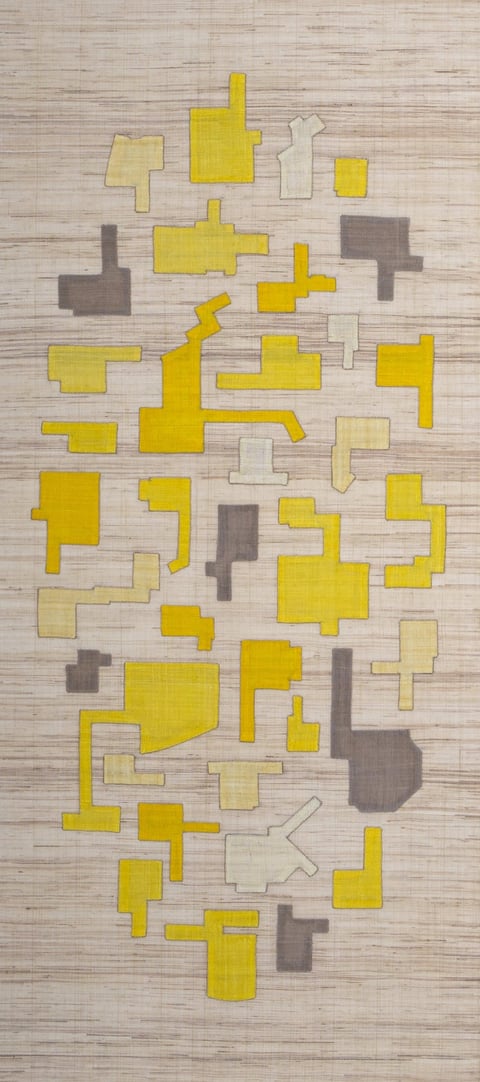

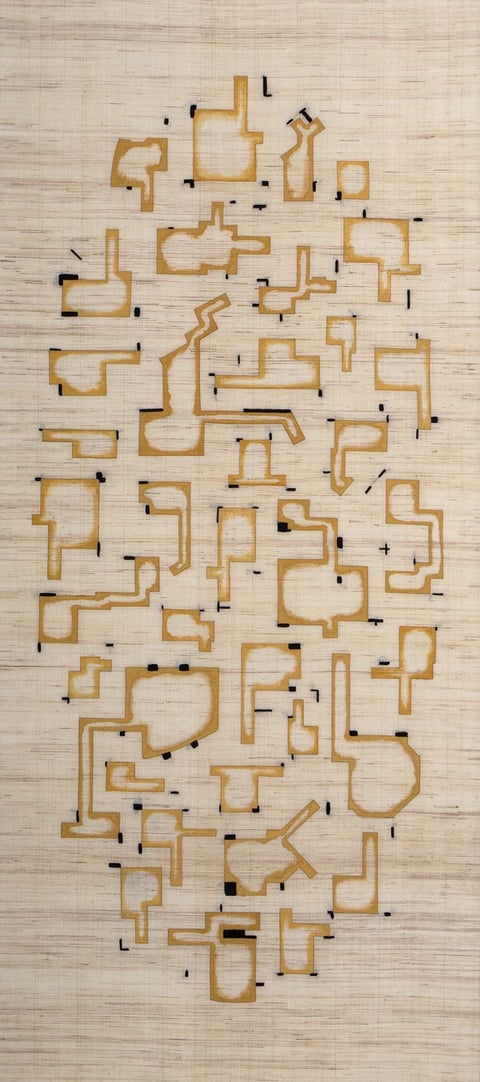

Jung Bo Young. Korean Composition with Yellow I and II (37 apartment living rooms), 2023. Hang-sewn dyed linen, yellow earth pigment with hide glue, embroidery thread
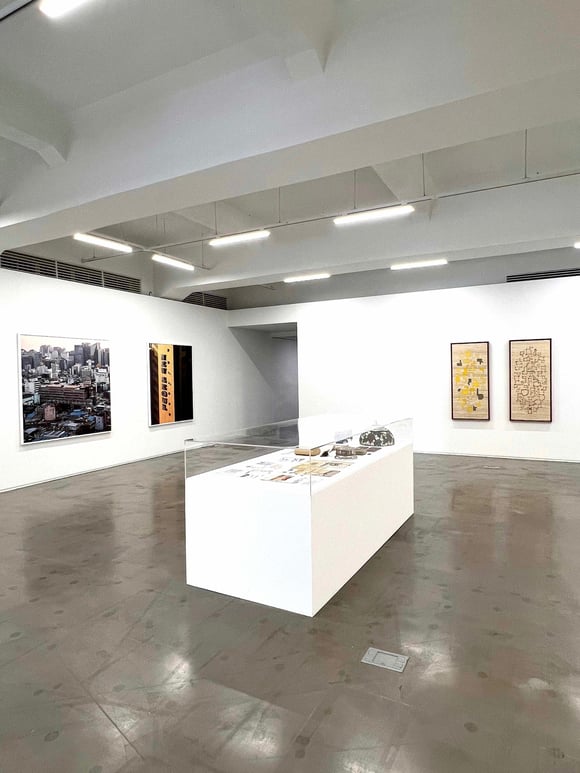
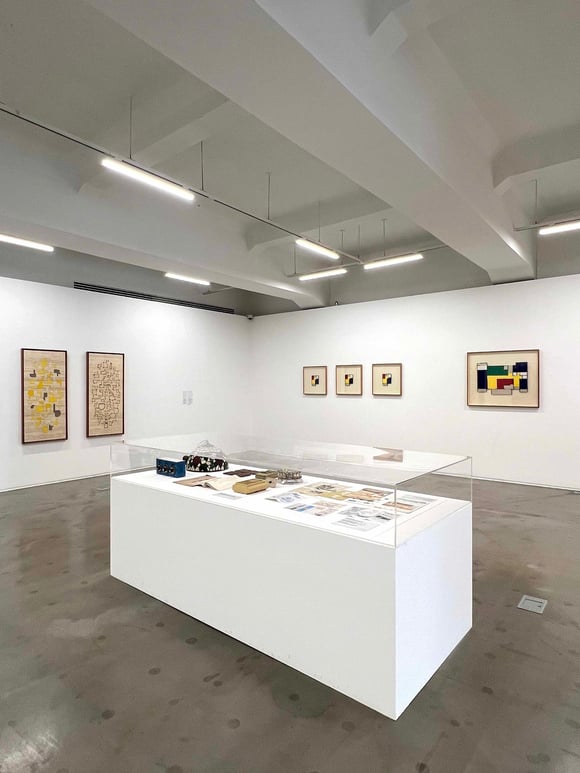
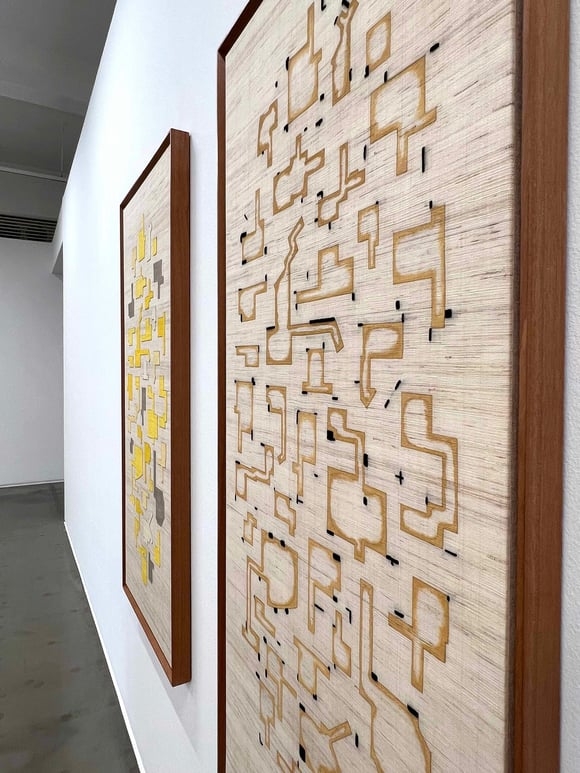
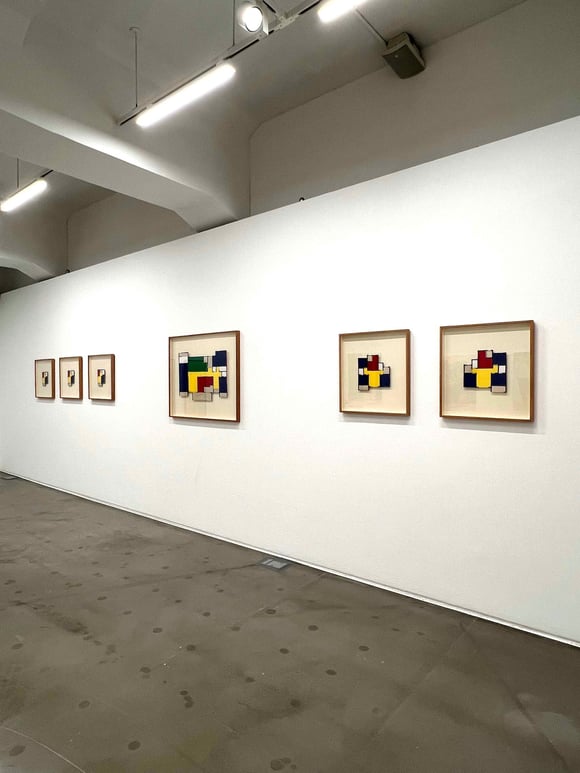




Jung Bo Young. Korean Composition with Yellow I and II / Korean Composition : Obangsaek series, 2023. Ilmin Museum of Art, Seoul
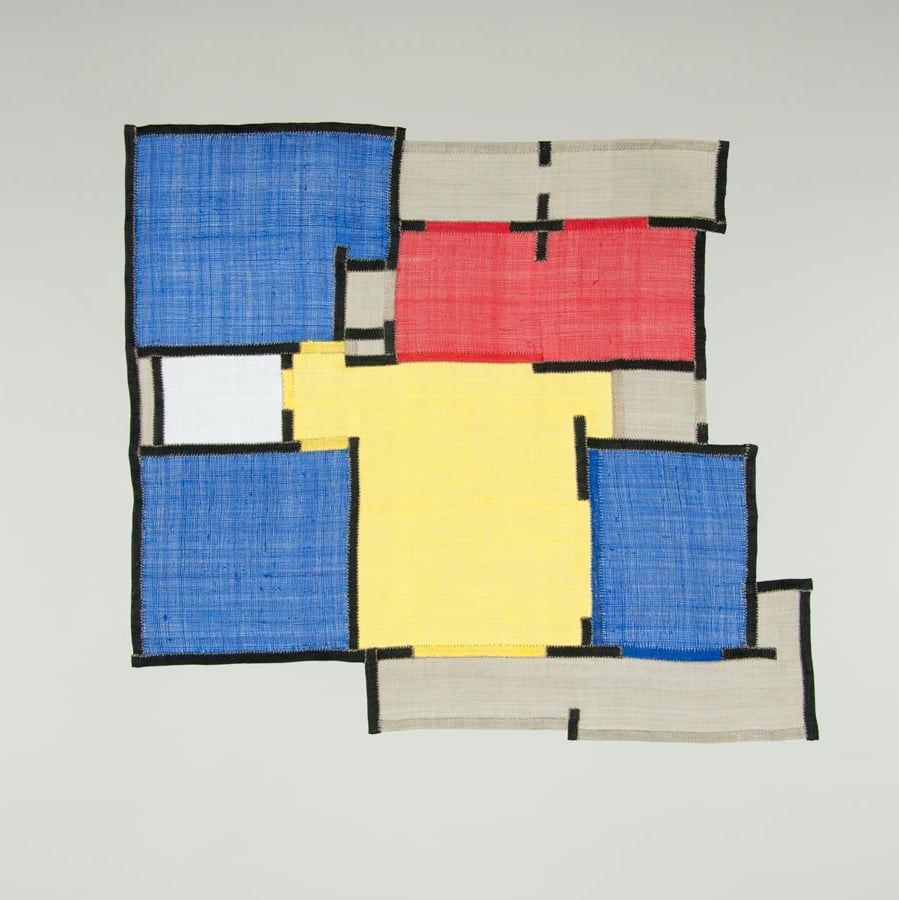

Jung Bo Young. Korean Composition No.34, 2011. Hang-sewn dyed linen, M+ Museum
Jung's textile compositions explore notions of 'home' (집 'jib': shelter-dwelling-residence + 고향 'gohyang': deeper connection and emotional attachment to native land) through semi-abstract works that juxtapose contemporary Seoul apartment floor plans with spiritual elements of Korean traditional crafts and color theories.
These linen compositions are hand-sewn using traditional Jogakbo (Korean patchwork) technique. Inspired by childhood memories of her grandmother making Hanbok and crafting Jogakbo textiles, Jung self-taught these techniques to reconnect with her cultural heritage.
'KOREAN COMPOSITION: 18_22_34_43_56_80' (2011, 2015-16) is in the permanent collections of M+ Museum, Hong Kong.
Based on contemporary Seoul apartment floor plans, this work reflects the evolution of Korean society and contemporary cultural identity. The title's numbers indicate apartment sizes by Pyeong (1pyeong = 3.3058m²) across six typical categories: XS to XL (60m² studios to 300m² urban mansions).
Korean apartments, unlike purely modernist housing projects elsewhere, drew inspiration from traditional Han-ok homes—maintaining focus on natural light, ventilation, floor heating, and peripheral veranda-like spaces that bridge old and new.
Medium: Jogakbo Tradition
Jogakbo is a 200-year-old Korean patchwork technique that emerged from traditional dressmaking, where women created colorful textile pieces from Hanbok fabric scraps. Jung sees today's apartment floor plans as continuation of this tradition's spirit—optimizing scarce materials through countless delicate decisions balancing availability with human needs.
The imperfections in her hand stitching invite viewers to connect with human elements in the composition, juxtaposing traditional and modern, spatial and spiritual, personal and collective memories while accessing the philosophy of this women's craft tradition.
Color
'Korean Composition: 18_22_34_43_56_80' uses primary colors, also known as 'OBANGSAEK' (5 traditional colors of Korea - red, blue, yellow, white, black- each containing a spatial and spiritual meaning) and one added neutral color (beige-grey).
Obangsaek means "five directions" (오방 'obang') and "color" (색 'saek') in Korean. It represents the 5 cardinal directions and is associated with five elements and other symbolic beliefs:
North (black: representing winter, water, sorrow, Yin)
South (red: fire, summer, sunlight, pleasure, yang energy)
East (blue: representing spring, tree, birth)
West (white: autumn, iron, righteousness)
Center (yellow: representing soil, the center of a universe)
Based on these meanings associated with the 5 colors, as well as Jung's interpretation, the composition uses:
Yellow for the living room (as the space is traditionally in the center of the house, where people spend most time during the day)
Red for kitchen and dining area (as it is a place using fire to cook, and share warmth)
Blue for the bedroom (where we rest at night and renew ourselves)
White for the restroom (where we clean ourselves)
Black for the wall (as it blocks the light)
Beige-grey as additional neutral color for spaces 'in-between': such as balcony, and utility room (not fully outside nor inside: quite particular in Korean traditional housing)
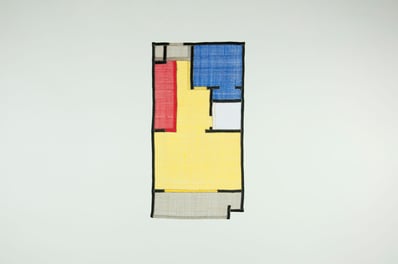
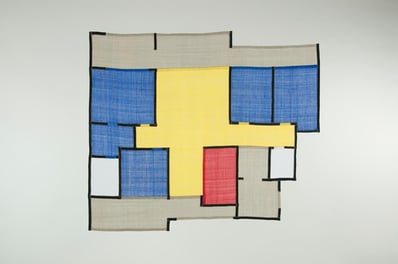
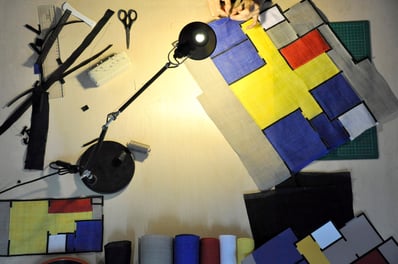
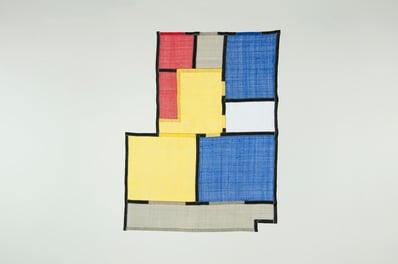
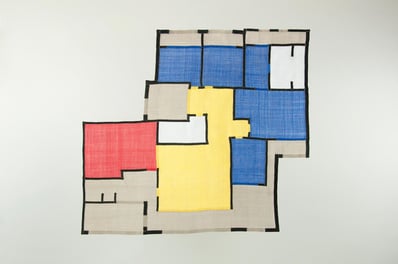
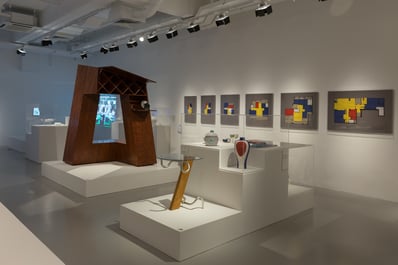

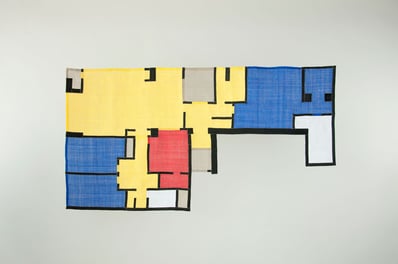
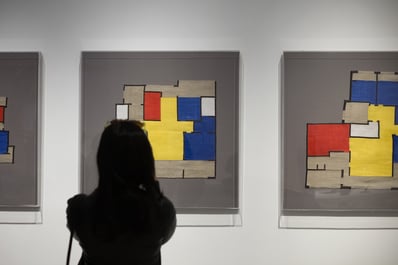









Jung Bo Young. Korean Composition : 18_22_34_43_56_80, 2011, 2015-16. Hang-sewn dyed linen
/ Exhibition view_Shifting Objectives : Design from the M+ Collection, M+ Museum, HongKong, 2017
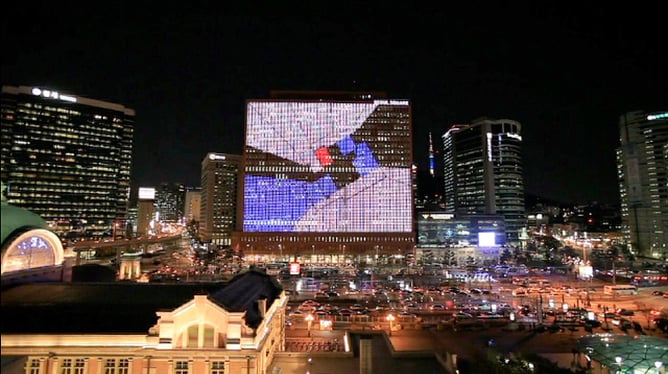
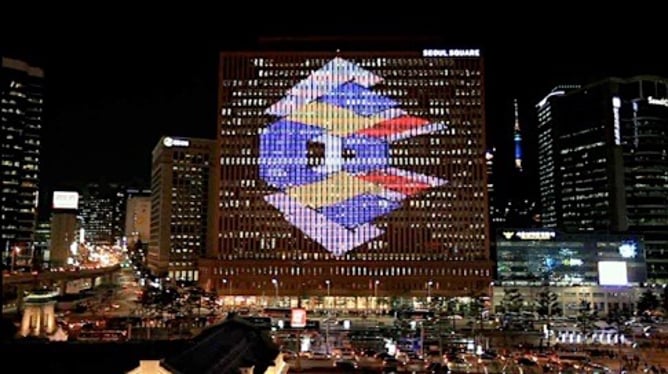
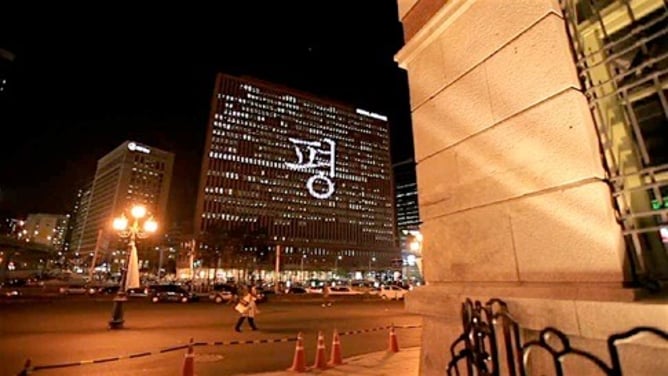
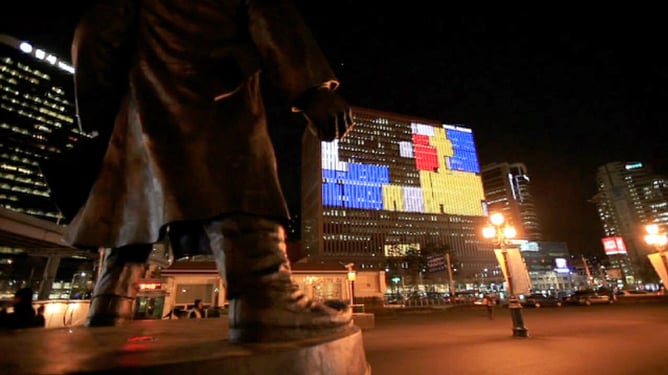
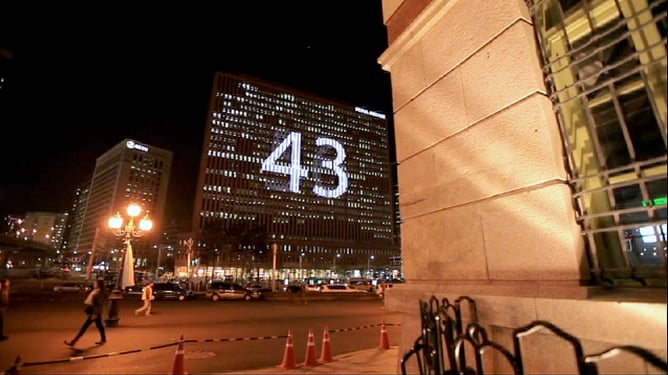





Jung Bo Young. moving image public screening, Seoul Square Media Facade, 2011